Nature-based solutions (NbS) are interventions that rely on natural features or processes to address societal problems and global challenges. Nature-based solutions stand in contrast to conventional solutions which typically do not consider the natural environment and often damage ecosystems. Since nature-based solutions emphasise sustainable restoration, management and conservation of natural or modified ecosystems, they are seen as a viable solution to mitigating and adapting to the impacts of climate change. Nature-based solutions can be applied across multiple sectors and environments. When employed on national or local levels, nature-based solutionscan be effective at strengthening community resilience to a variety of challenges.
Nature-based solutions are key, cross sectoral elements of the climate action UN-Habitat is promoting under the Myanmar Climate Change Alliance phase 2 program. UN-Habitat has implemented, or is currently implementing the following nature-based solutions in Myanmar.
What is an Eco-Village?
According to the Global Ecovillage Network (GEN), an ecovillage is an intentional, traditional or urban community” that uses principles of local ownership and participatory processes while addressing four areas of sustainability: social, culture, ecological, economic. The ecovillage model can be considered a means for combining the different pieces needed for people to live sustainably. Ecovillages typically synthesise the principles behind green building techniques, permaculture, renewable energy, circular economies, communal living structures, and cooperative governance models.
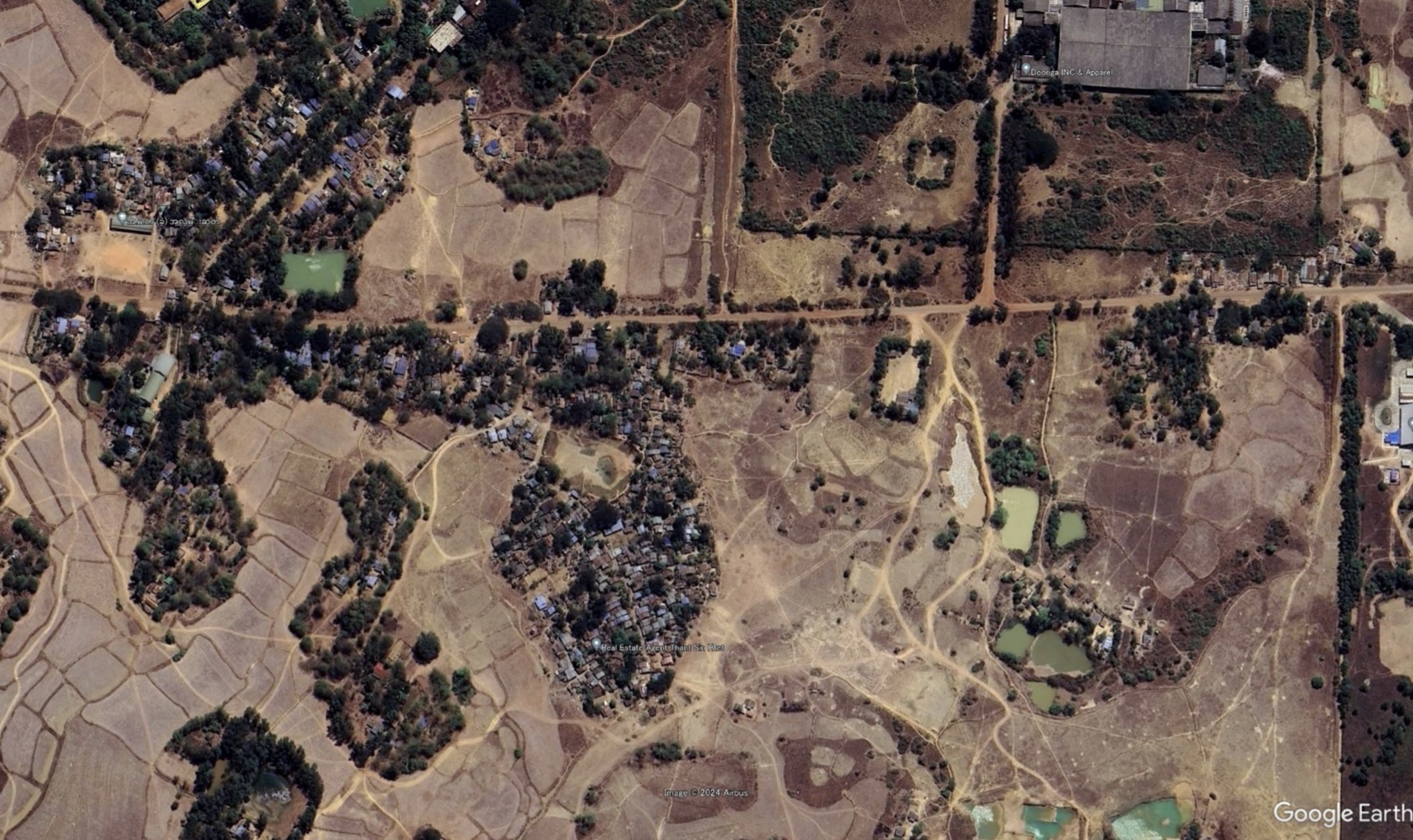
Ecovillage location in Thanlyin Township
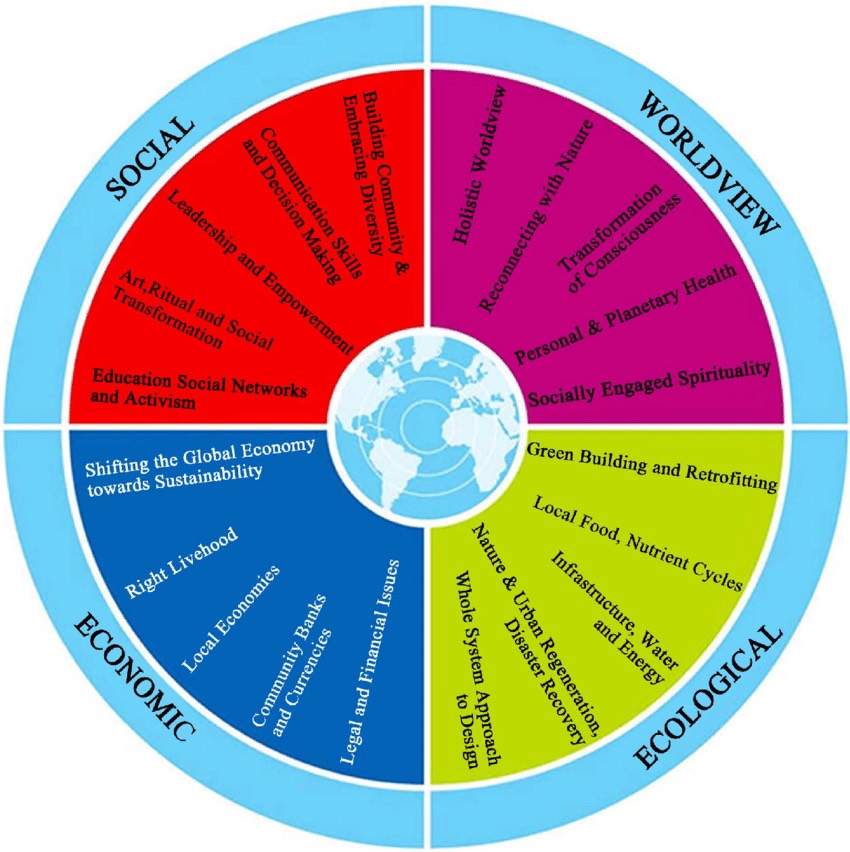
Global Ecovillage Network model of sustainability
Source: Kuruoglu, Murat & Çinar, Hande & Yirmibesoglu, Funda. (2021). Eco-Village Initiatives in Turkey and a New Alternative Life. Current Urban Studies. 09. 636-657. 10.4236/cus.2021.93038.
Ecovillages in Myanmar
The Ecovillage project, initiated by Golden Dowa, a waste recycling company, as part of their corporate social responsibility efforts, aims to establish a sustainable community in a neighbouring, informal village in Thanlyin. As the project expands there will be collaboration with other private sector organisations including Myanmar Koei. The project aims to leverage Golden Dowa's expertise in waste treatment, recycling, and composting, while also incorporating climate change-related aspects aligned with MCCA2 objectives. Key activities include rainwater harvesting, purification, and pond management to address water quantity and quality issues identified in the target village. CSR initiatives involve waste collection from communities, with potential composting activities and agricultural use of household waste. The scope of work is being defined based on stakeholder feedback, with support from various partners including private companies and international NGOs. Governance will involve a community-driven approach, with a CDC structure ensuring sustainability and ownership. Security concerns are addressed through community engagement and partnerships with local companies. Renewable energy solutions such as solar street lights, panels for schools, and energy-efficient cook stoves are being explored, with potential funding support from donors and UN-Habitat. Overall, the eco-village project aims to serve as a model for sustainable development in peri-urban areas, showcasing integrated environmental solutions and community empowerment.
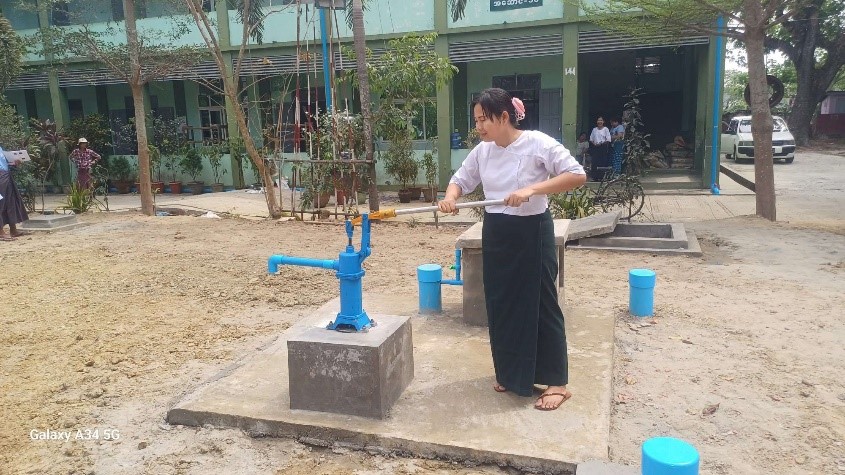
Local resident uses water pump as part of Tametotto rainwater harvesting system in an informal settlement in Yangon
What is Tametotto?
Tametotto is an advanced rainwater harvesting system developed by Daiken Corporation in Fukuoka, Japan. It features a large underground concrete tank that collects, stores, and purifies rainwater, making it safe for drinking. The typical capacity of these tanks is around 160k+ liters, which is sufficient to meet the clean water needs of numerous households. The system includes a filtration mechanism to ensure the water is potable, offering a reliable and cost-effective water source, especially in regions with limited access to clean water or during dry seasons. By providing a substantial storage capacity and converting rainwater into drinkable water, Tametotto helps address water scarcity and alleviates the financial strain on households that otherwise rely on purchased water.
Tametotto Rainwater Harvesting in Myanmar
In Yangon’s informal settlements, the Tametotto rainwater tanks were implemented to improving water security amid worsening water shortages due to climate change. Constructed in 10 locations across target townships, these systems, which had been previously deployed by UN-Habitat in other countries, were introduced in Myanmar for the first time. The tanks store up to 38 tonnes of water, ensuring a year-round supply even during dry seasons, thus reducing reliance on costly bottled water and groundwater extraction that exacerbates land subsidence. The simple, low-cost design of the Tametotto, consisting of an overhead tank, a nature-based purification system, and an underground storage container, makes it suitable for Yangon’s informal settlements. Its adaptability to locally available materials minimizes the need for expensive imports, while the underground placement of the tank preserves above-ground space for other uses. The system is easy to maintain, allowing schools, equipped with training from the project, to manage it independently, thus providing a sustainable and reliable water source for thousands of children.
Where: Thanlyin, Dala, Hlaing Thar Yar, Shwe Pyi Thar, Insein Townships
When: 2023
Who: UN-Habitat
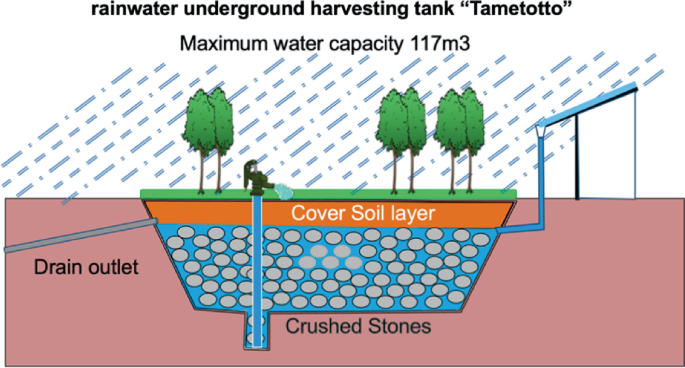
Diagram of Tametotto system
Source: Hoshino, H. (2023). Collaboration Between For-Profits and Non-profits: Strategies for Successful Market Entry into Developing Countries. In: Hayashi, T., Hoshino, H., Hori, Y. (eds) Base of the Pyramid and Business Process Outsourcing Strategies. Springer, Singapore. https://doi.org/10.1007/978-981-19-8171-5_1
What is Mangrove Restoration?
Mangrove restoration is the process of regenerating mangrove forest ecosystems in areas where they previously existed but have been degraded, damaged, or destroyed. It involves assisting the recovery of these vital coastal ecosystems by understanding the local ecology, hydrology, and factors that led to their decline. The goal is to re-establish the habitat, functions, and ecosystem services provided by mangroves, such as water filtration, nursery grounds for aquatic life, coastal protection, carbon sequestration, and supporting biodiversity. Successful restoration requires a comprehensive approach, including correcting hydrological conditions, promoting natural regeneration, and potentially planting mangrove seedlings, while actively involving local communities and stakeholders.
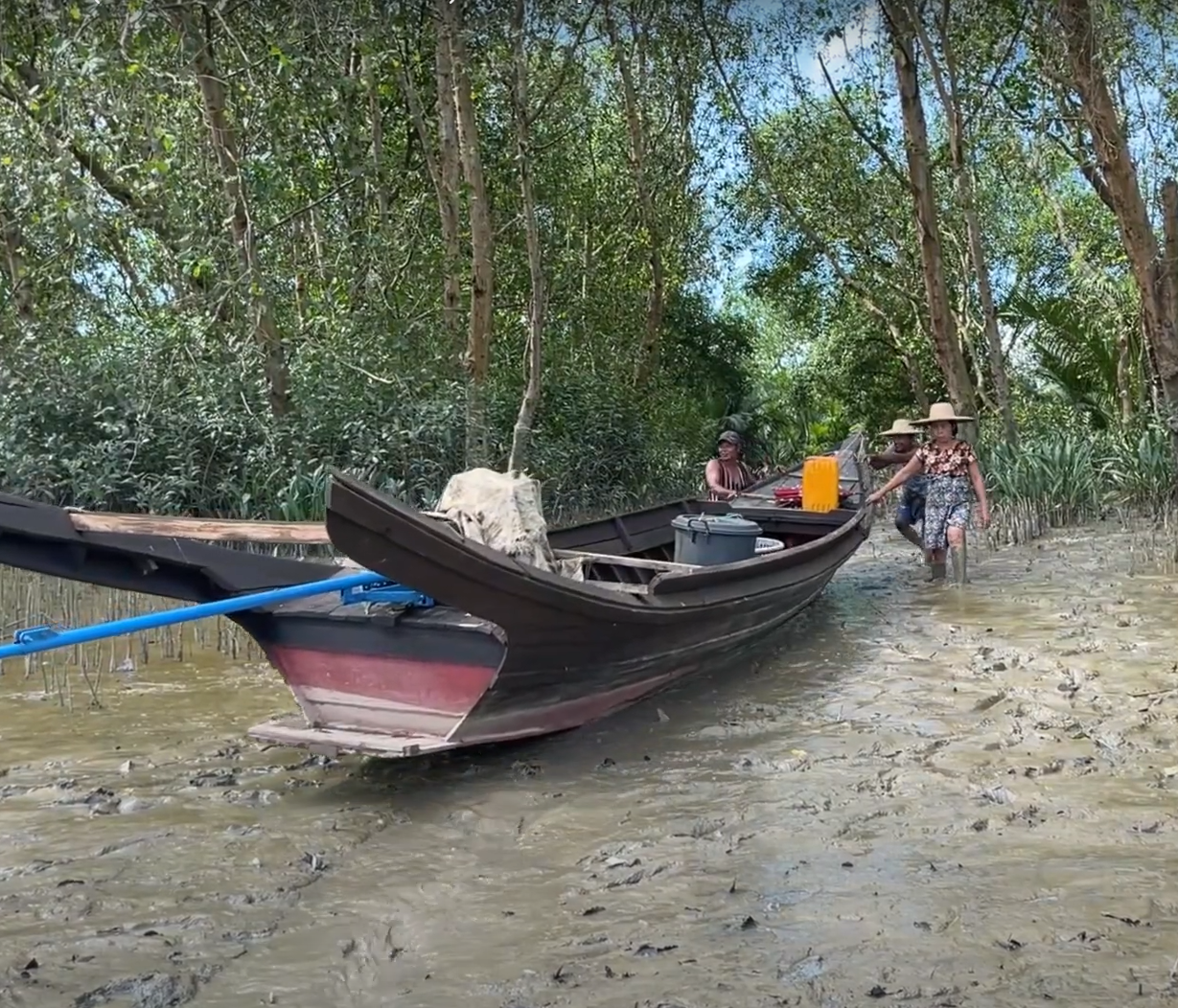
Fisher women stand next to mangroves while pushing their boat into the waterway in Labutta township
Where: Labutta Township
When: 2017
Who: UN-Habitat, FREDA.
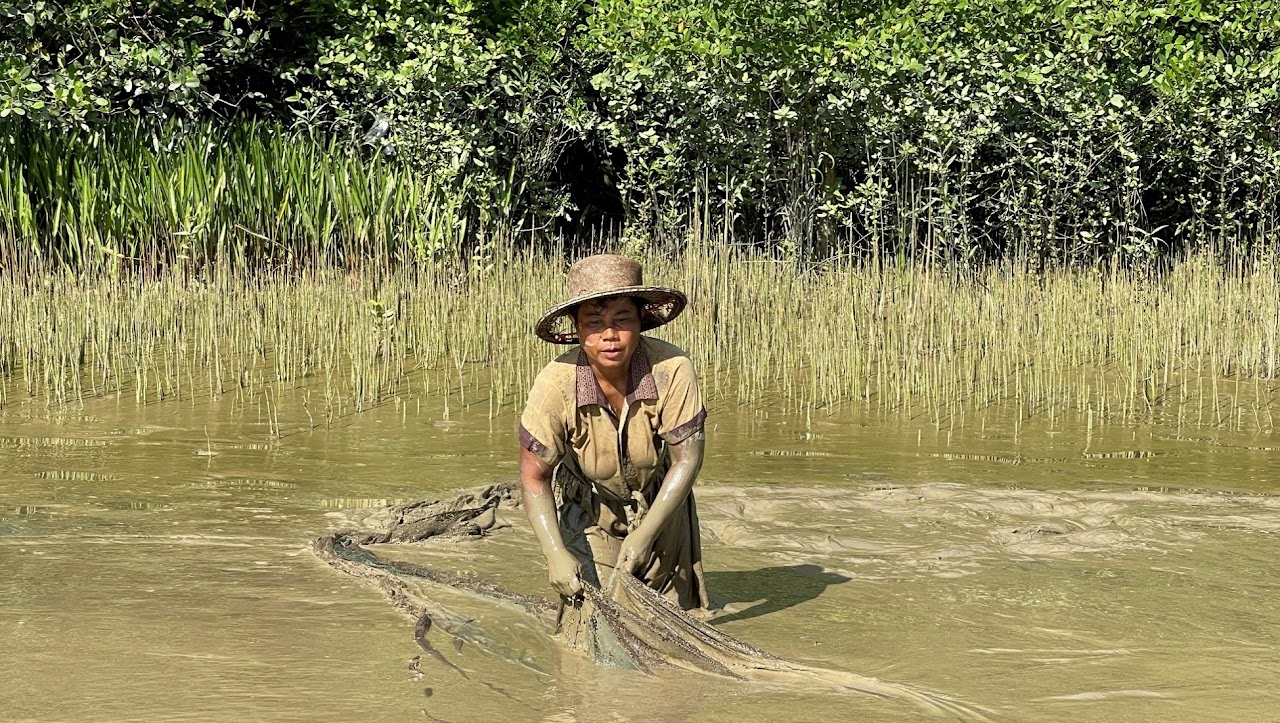
Local fisher woman casts net into water near mangroves in Labutta township
Mangrove Restoration in Myanmar
In Thin Gan Lay Village in Labutta township, villagers replanted 10 acres of mangrove seedlings in August and September 2017 with support from additional organizations such as the local NGO FREDA to prevent erosion in an area exposed to storm surge. Different methods and materials were used (direct seed, naked root, or with plastic bags), and overall the seedlings had an 80% survival rate as of July 2018. Restoring the mangroves will help to ensure protection from storm surges and strong winds, re-establish fish habitat, and provide wood for cooking and building material. (Source: MCCA_Case-Study-5_ENG.pdf ).

School student attends climate change awareness raising session
What is School Led Adaptation
School led climate adaptation can be a powerful entry point for promoting nature-based solutions (NbS) in communities. Schools are able to pilot NbS such as rain gardens, tree planting, and green roofs on a small scale while simulatneously educating students and parents as well as demonstrating the benefits of NbS. Furthermore, schools are able to strengthen their role as a community hub by contributing to local climate action. School led climate adaptation can directly improve the resilience of their communities by tackling the urban heat island effect, urban flooding, biodiversity protection, and more.
School Led Adaptation in Myanmar
In each of the Myanmar Climate Change Alliance townships, one school will be selected to pilot school led climate adaptation. The project aims to empower youth to take lifelong climate action by fostering environmental awareness and inspiring 'climate ambassadors' to share their knowledge with their communities. Additionally, the project aims to identify opportunities for the education sector to localize solutions to climate hazards and serve as models for community led climate action, urban sustainability, and innovative climate adaptation across Myanmar. The projects will achieve these goals by leading awarness raising activities, forming eco-clubs, conducting participatory assessments and planning, implementing pilot climate actions, and finally dissiminating the results and knowledge for increased sustainability. Specific pilot climte actions are expected to include increasing the efficiency of water and electricity use, rainwater harvesting, waste management, and gardening and tree planting.
Where: Thanlyin, Dagon Seikkan, South Dagon, Bogale, Pyapon, Nyaung U, Taunggyi, and Kalaw Townships
When: 2024-2025
Who: UN-Habitat
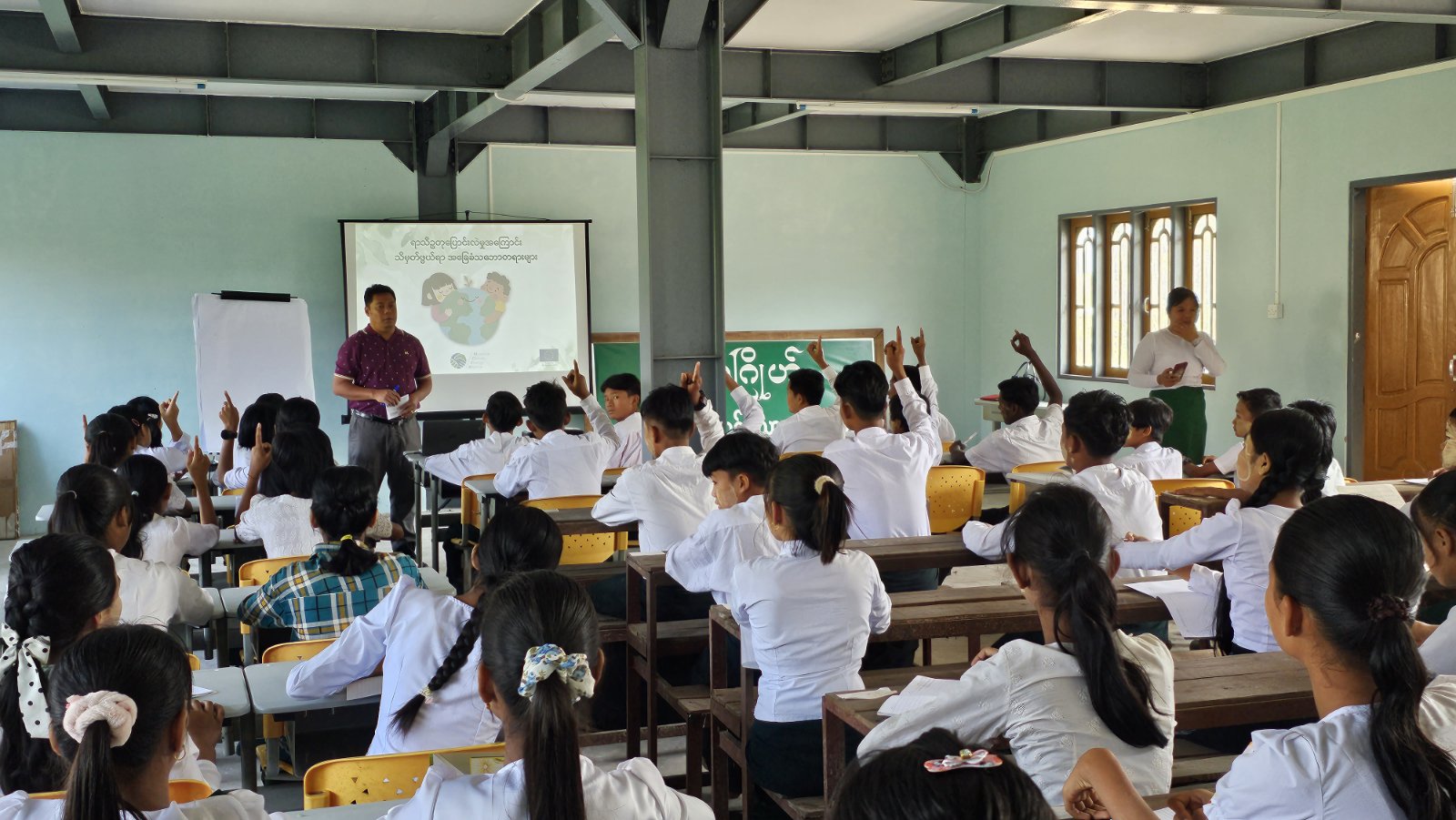
UN-Habitat staff give presentation to students on climate change in Myanmar